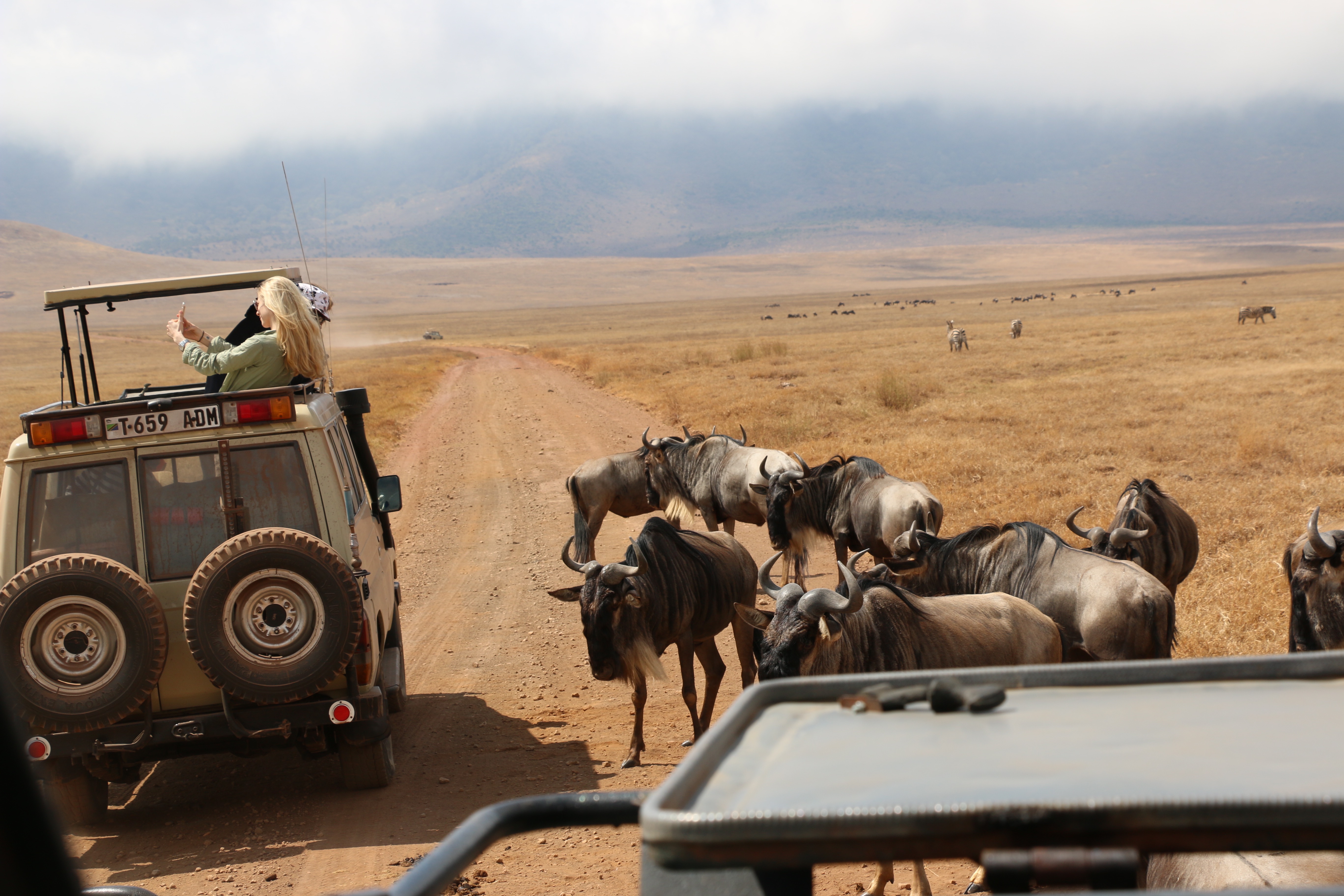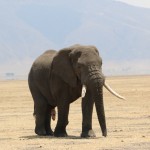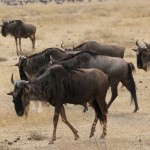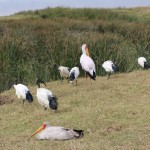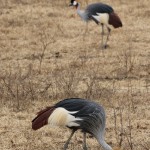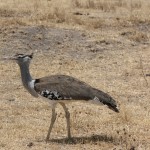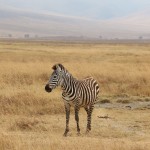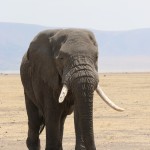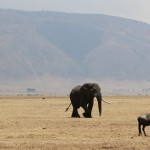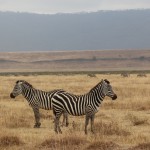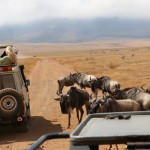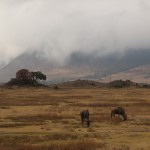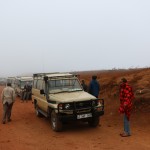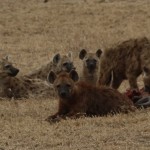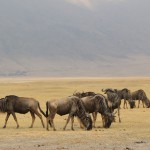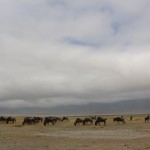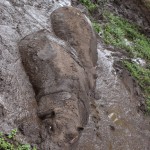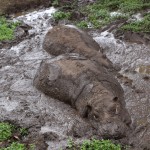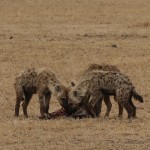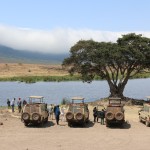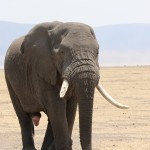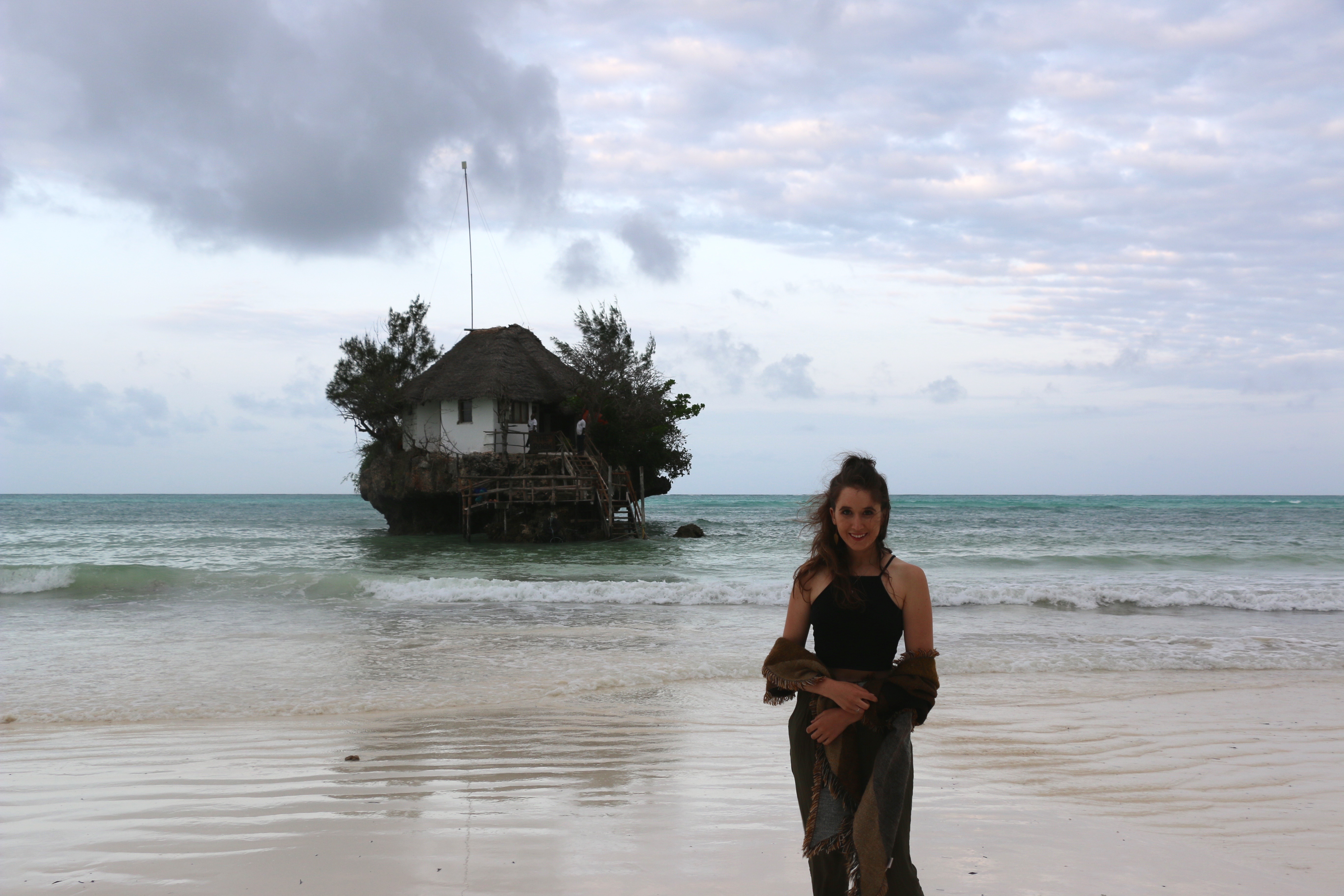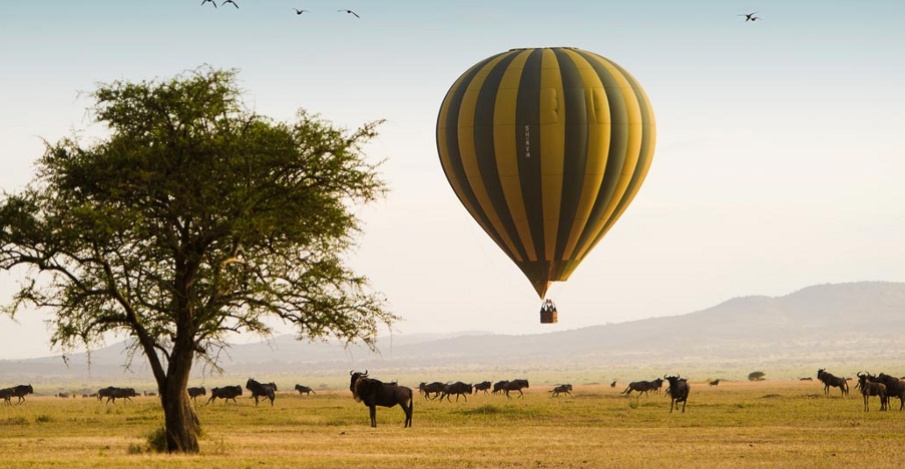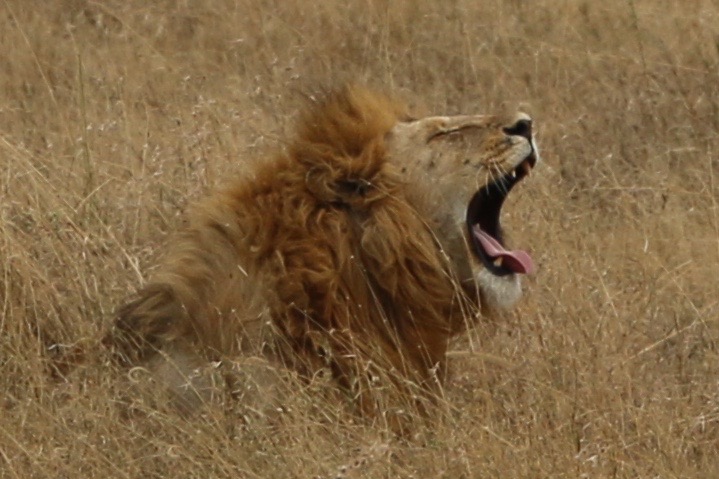Tanzania
The Final Safari: The Ngorongoro Crater
You’d think after three wildlife packed days in the Serengeti I would be 100% over african animals and ready to run home to the land of kangaroos and drop bears koalas. But you thought wrong. Because you have never really seen it all with African wildlife. There is always one more elephant to fall in love with, one more hyena to laugh at and many, many wildebeest to model for you.
Ngorongror Crater gives the great Serengeti a run for its’ money.
 Ngorongoro is one of the largest unbroken calderas in the world that isn’t a lake, being a colossal 19km wide and with a surface of 264 sq km. The steep, unbroken walls soar 400m to 610m and provide the setting for an incredible natural drama as prey and predators graze and stalk their way around the open grasslands, swamps and acacia woodland on the crater floor. It’s such an impressive sight that, other vehicles aside, you’ll wonder whether you’ve descended into a wildlife paradise.
Ngorongoro is one of the largest unbroken calderas in the world that isn’t a lake, being a colossal 19km wide and with a surface of 264 sq km. The steep, unbroken walls soar 400m to 610m and provide the setting for an incredible natural drama as prey and predators graze and stalk their way around the open grasslands, swamps and acacia woodland on the crater floor. It’s such an impressive sight that, other vehicles aside, you’ll wonder whether you’ve descended into a wildlife paradise.
It was a cold, cold morning when we started our descent inside the magnificent crater in safari jeeps. The eerie layer of fog that sat atop the crater gave the whole morning a Jurassic Park tone, which was really emphasised by my companions playing the soundtrack… On repeat… (I felt as though I was back at Adventure Island in the bizarre ‘Jurassic Park’ area where the poor staff are also subjected to the theme on repeat).
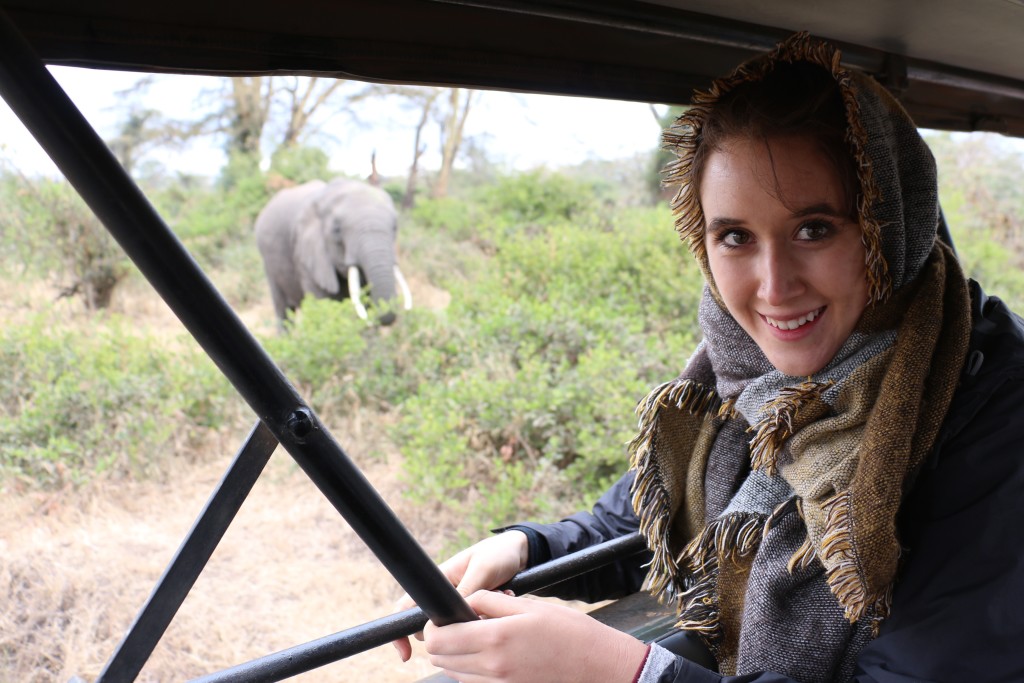 As we reached the crater floor it was obvious that fog wasn’t lifting anytime soon. The serene melancholy tone of the morning was unlike the sweltering Serengeti safari days and was actually darkly refreshing.
As we reached the crater floor it was obvious that fog wasn’t lifting anytime soon. The serene melancholy tone of the morning was unlike the sweltering Serengeti safari days and was actually darkly refreshing.
As soon as we started the drive we were surrounded by wildebeest. I hadn’t had the opportunity to examine these strange creatures up close and personally in the Serengeti so it was fantastic to witness the weirdness that is the wildebeest.
We had learnt in the Serengeti the African legend that the Wildebeest was made from leftover pieces of many other African animals…. The head of an ant, the mane of a lion, the horns of an antelope etc.
The sheer quantity of these creatures was incredible. I can only wonder how absolutely spectacular it would be to have been around a few months early to witness the great migration of these odd animals.
A few wildebeest selfies were taken and we continued on our adventure, stumbling upon one elephant that had literally no concern for vehicles…
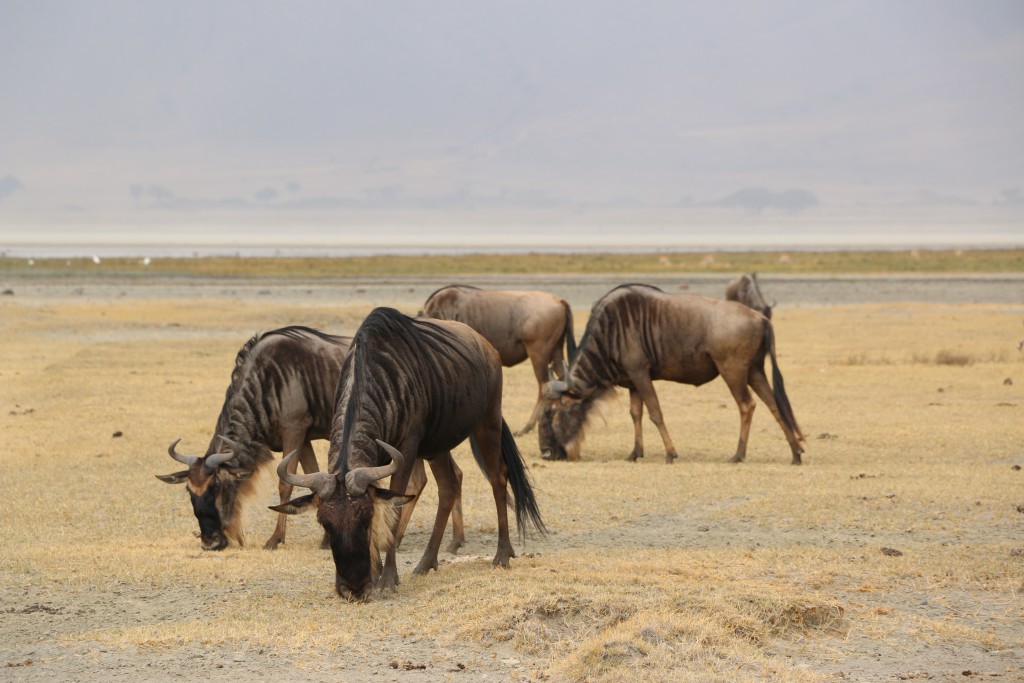 By this point I had seen many elephants, but none quite this close… I could see every wrinkle, every scratch and every grey flap of wrinkly elephant skin. It was phenomenal. Never mind the wildebeest selfie. I got a photo with this guy.The day continued in a similar, close and personal wildlife encountering manner. One of the most common creatures we spotted were hippos. Which even joined us for lunch… The scene around the lovely Ngoitoktok Springs picnic site and Lake Magadi was the post ideal place to take a break but being a mere 10 metres away from the 3000kg fat beasts was slightly off-putting…
By this point I had seen many elephants, but none quite this close… I could see every wrinkle, every scratch and every grey flap of wrinkly elephant skin. It was phenomenal. Never mind the wildebeest selfie. I got a photo with this guy.The day continued in a similar, close and personal wildlife encountering manner. One of the most common creatures we spotted were hippos. Which even joined us for lunch… The scene around the lovely Ngoitoktok Springs picnic site and Lake Magadi was the post ideal place to take a break but being a mere 10 metres away from the 3000kg fat beasts was slightly off-putting…
But these tame hippos took no notice of our presence and went on doing what they do best – which is basically not a lot…
No day on safari in Africa is complete without at least one animal displaying his primal instincts. I had seen gorillas, lions and baboons go at it but the Ngorongoro crater wasn’t going to let me leave without sighting at least one sexual creature.
The day added a whole new meaning to ‘hung like an elephant’.
 Unfortunately we did not get the chance to witness any of the parks 22 black rhinos. But that didn’t concern us too much considering the incredible amount (and short distance) of everything that we did see.
Unfortunately we did not get the chance to witness any of the parks 22 black rhinos. But that didn’t concern us too much considering the incredible amount (and short distance) of everything that we did see.
Ngorongoro Crater is packed full of wildlife, the reason for all of this abundance being the presence of water, both from the permanent springs that sustain the swamps and permanent streams and rivers fed by run off from the crater rim forests. Although the Serengeti was completely amazing, the Ngoronrgoro Crater is so much smaller and contained that you can spot just as many animals with a quarter of the bumpy driving.
If you are self-driving, the main route into the crater is the Seneto descent road, which enters the crater on its western side. To come out, use the Lerai ascent road, which starts south of Lake Magadi and leads to the rim near headquarters. The Lemala road is on the northeastern side of the crater near Ngorongoro Sopa Lodge and used for both ascent and descent.
The gates open at 6am and close for descent at 4pm; all vehicles must be out of the crater before 6pm. Officially, you’re only allowed to stay down in the crater for a maximum of six hours, but this is rarely enforced – there is usually no one checking the vehicles. Self-drivers are supposed to hire a park ranger (US$20 per vehicle) for the crater where the descent begins, but are sometimes let in without one.
Ngorongoro Crater services fee per vehicle per entry per 24hr US$200.

